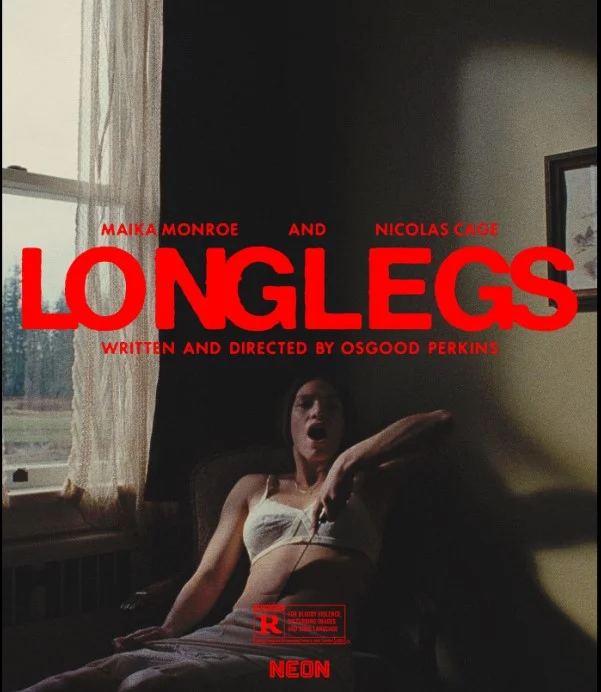
Unsettling Mystery with Stellar Performances in Osgood Perkins’ “Longlegs”
Osgood Perkins’ “Longlegs” isn’t your typical horror film. It’s a meticulously crafted descent into a waking nightmare, designed to leave you unsettled and pondering long after the credits roll.
Read More interesting articles on trendystring.com
A World of Exaggerated Tension
From the oppressive sound design to the theatrical performances, “Longlegs” embraces a heightened sense of reality. It’s closer to a cinematic hallucination than a grounded story. While comparisons to “The Silence of the Lambs” arise due to the FBI agent and serial killer elements, Perkins seeks a far more unsettling atmosphere. Imagine the scene in “Silence” where Clarice Starling navigates the dark storage unit – that’s the pervasive feeling throughout “Longlegs.”
Teetering on the Edge of Explanation
Perkins occasionally stumbles in maintaining this dreamlike state. A late-film exposition dump disrupts the flow, attempting to explain the preceding events with unnecessary detail. Nightmares thrive on ambiguity, and “Longlegs” falters when it tries to over-explain. This is a recurring issue – despite the pre-release hype, the film sometimes hesitates to fully embrace its strangeness. It pulls back from its potential for pure, unsettling weirdness, opting for clarification where confusion would have been more impactful.
A Dive into the Uncanny
The story unfolds in a distorted version of the 1990s. New FBI agent Lee Harker (Maika Monroe) tackles her first case, driven by a powerful intuition. Her success leads the FBI to suspect she possesses unique abilities, subjecting her to mental evaluations. This intriguing thread, however, gets sidelined, leaving Lee’s special skills largely unexplored. “Longlegs” could have pushed this element further, adding another layer to its enigmatic atmosphere.
Nicolas Cage Uncaged
Nicolas Cage delivers a characteristically wild performance as the titular Longlegs, a Satanic serial killer with unsettling echoes of both Ted Bundy and Tiny Tim. Lee joins forces with Agent Carter (Blair Underwood) to investigate a series of gruesome family murders. A cryptic figure known as Longlegs sends Zodiac-style messages linked to specific dates, orchestrating these horrific acts.
The Power of Symbolism
Alicia Witt portrays Lee’s deeply religious mother, Ruth, who constantly reminds her daughter about praying. This foreshadows the spiritual torment Lee will face. Every element in “Longlegs” feels meticulously chosen. From the low camera angles that heighten tension to the quick bursts of imagery and sound, Perkins creates a world brimming with symbolism.
A Feast for Interpretation
The film invites viewers to unpack its meaning. Character names themselves hold significance – is Lee Harker a subtle nod to Bram Stoker’s Dracula? And is Kiernan Shipka’s single, powerful scene as the sole survivor, Samantha Camera, a coincidence, considering the film relies heavily on perspective?
A Film That Stays With You
“Longlegs” is a film that rewards attentive viewers. It’s a puzzle box brimming with potential interpretations, likely sparking countless online discussions and analyses. However, the film’s meticulous construction occasionally clashes with the unhinged atmosphere it strives for. An alternate version, one that hides its secrets more effectively and avoids the exposition dump, could have been truly groundbreaking.
Nightmares Don’t Need Roadmaps
Despite its missteps, Perkins’ talent for building mood and tension is undeniable. The film’s brutality will appeal to horror fans, and the underlying themes of faith, evil, and generational trauma offer a deeper layer for reflection. While “Longlegs” may not deliver the knockout punch promised by its marketing, much like a nightmare, it lingers in the mind, a testament to the film’s unsettling power.
Watch Trailer